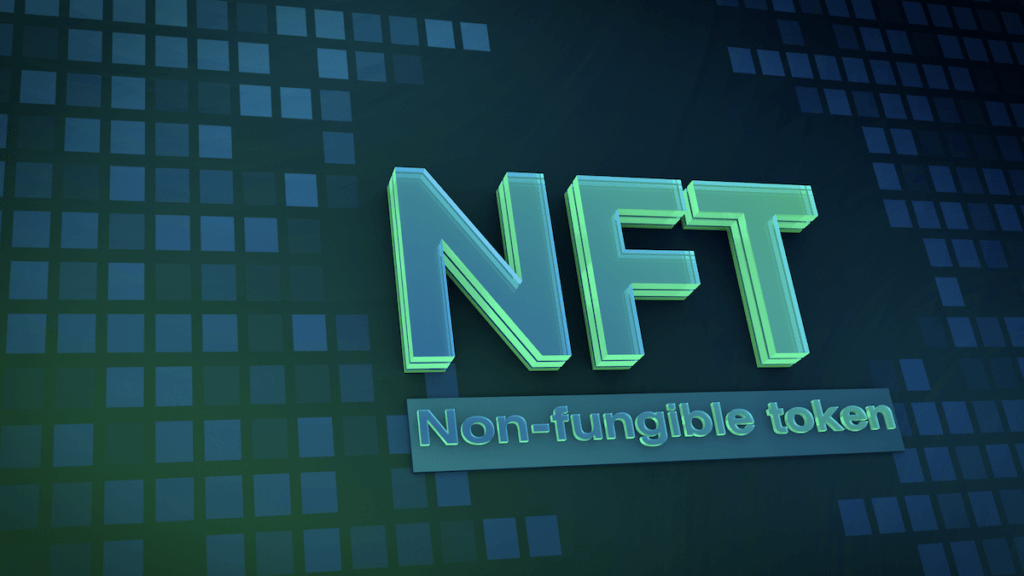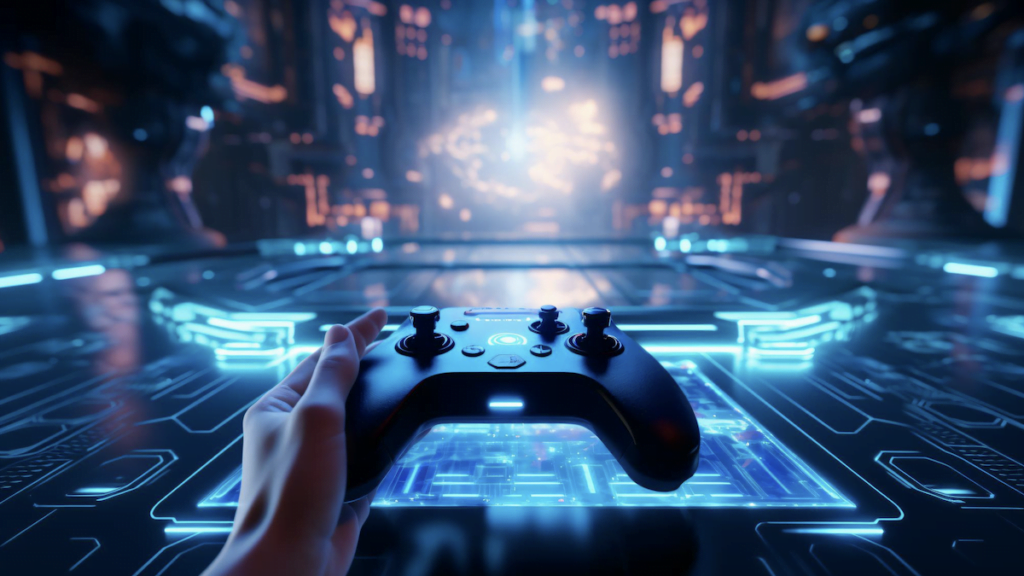NFTs and Gaming The Perfect Match in the Web3 Era
Discover how NFTs are revolutionizing the gaming industry, providing digital ownership and wealth generation opportunities.

Non-fungible tokens, or NFTs, are transforming the gaming sector by providing exclusive chances for digital world ownership and wealth generation. NFTs are essential elements of the Web3 environment that provide participants unprecedented access to own, trade, and leverage assets.
This revolutionary strategy creates a new economic model where developers and gamers may profit from safe, open transactions and genuine digital ownership in addition to improving the gaming experience.
The Evolution of Gaming in the Web3 Era
The Web3 era's growth of gaming represents a dramatic move away from centralization and towards player empowerment. This next phase, which is based on blockchain technology, presents ideas such as provable scarcity of in-game goods, decentralised gaming economies, and play-to-earn models.
These developments not only provide players more command and ownership over their virtual goods, but they also create new opportunities for social interaction and financial gain. The lines between developers, users, and creators in the gaming industry are blurring as games becoming increasingly integrated with the blockchain and offer a more rewarding and immersive experience.
How Does NFTs Work in the Context of Gaming?
NFTs serve as digital ownership certificates for in-game items like virtual land, characters, skins, and weaponry in the gaming context. Every NFT is either one-of-a-kind or a limited edition, and its authenticity and scarcity may be confirmed by blockchain verification. This enables users to safely and openly purchase, sell, or exchange their assets with other users, frequently on specialised markets.
By enabling new gameplay dynamics like inter-game item usage and player-driven economies, the integration of NFTs into gaming not only increases the collectibility and worth of in-game objects but also encourages a deeper degree of involvement and participation in the gaming experience.
Benefits of Integrating NFTs in Gaming
Numerous advantages that improve both the player experience and the economic structure of games are provided by incorporating NFTs into gaming. With NFTs, gamers may truly own digital assets that they can trade or sell on secondary marketplaces, possibly making money off of their in-game accomplishments. Because developers may profit from a portion of the transactions that take place on their platforms, this model also incentivizes them to innovate.
NFTs also make it possible for games to be persistent and interoperable, meaning that resources from one game may be used in another, giving the gaming ecosystem additional depth and continuity. For those interested in exploring more about how gaming platforms integrate such technologies, you can check the comprehensive Casino software provider list at Onlinecasinogroups.com.

Technical and Security Challenges Associated With NFTs
Although creative, the integration of NFTs in several sectors—gaming in particular—introduces a number of technological and security problems that require careful attention.
- Scalability: The underlying technology of NFTs, blockchain networks, frequently faces scalability problems. Excessive transaction volumes may cause network congestion, which might worsen user experience by increasing prices and causing transaction times to lag.
- Security Vulnerabilities: While smart contract issues and platform security breaches are two examples of potential vulnerabilities, NFT security is of utmost importance. The system's credibility may be damaged if these flaws result in the theft of NFTs or other digital assets.
- Environmental Concerns: Blockchain technology's energy usage, especially that of proof-of-work systems, presents environmental issues. The processing power needed can result in large carbon footprints, which is a growing source of controversy.
- Regulatory Compliance: It can be difficult to navigate the intricate and changing regulatory environment. Adherence to legal statutes concerning digital assets, safeguarding consumers, and financial rules differs across different jurisdictions and continues to be a substantial obstacle.
- Interoperability: Interoperability across various blockchain platforms and gaming ecosystems is essential for NFTs to realise their full potential. The smooth transfer and usefulness of NFTs across systems is, however, constrained by the fact that modern technology frequently functions in silos.
For NFTs to be widely used and sustainably in the gaming industry and beyond, these issues must be resolved.
Popular Games That Have Successfully Integrated NFTs
While NFTs have been successfully incorporated into games, a few titles stand out for their creative application of blockchain technology to improve player engagement and gameplay:
- Axie Infinity: Widely recognised as a trailblazer in the NFT game industry, Axie Infinity lets users gather, mate, and engage in combat with imaginary beings known as Axies, each of whom is represented by an NFT. Play-to-earn features in this model have not only made it profitable for players, but it has also established a benchmark for other blockchain games.
- CryptoKitties: One of the first games to make NFTs well known is CryptoKitties, which allows users to purchase, amass, breed, and trade virtual cats that are all owned solely by them and protected on the Ethereum blockchain.
- Decentraland: An online virtual environment where users may buy, develop, and sell NFTs for virtual land parcels. Decentraland has established a strong digital economy that facilitates a diverse array of entrepreneurial endeavours within its domain.
- The Sandbox: A thriving community of players and developers is fostered by this user-generated content platform and game, which uses NFTs to enable creators to own, create, and sell assets and gaming experiences in the virtual world.
- Sorare: An international fantasy football league in which participants use digital player cards, or NFTs, to build, trade, and manage virtual teams. By skillfully fusing the domains of sports and blockchain, Sorare provides an intriguing fusion of gaming and collecting.
These games demonstrate the various ways that NFTs are being used in the gaming sector, as well as the ways that blockchain technology and digital ownership are changing how players engage with virtual worlds.

Impact on Game Dynamics and Player Engagement
By adding a layer of ownership and financial incentive, NFTs drastically change the dynamics of games and increase player involvement. In addition to gaining a competitive edge in the game, players who get rare in-game things like NFTs may be able to profit financially from these items in the long run, as their value may increase due to supply and demand.
Players become stakeholders as a result, increasing their level of involvement in the game and promoting longer, more meaningful interactions. Furthermore, NFTs make it possible to include new game mechanisms that enhance gameplay by incorporating real-world economic concepts into trade and crafting systems. As players cooperate, compete, and engage in a marketplace-driven environment, these dynamics also promote lively communities around games, strengthening social contact and community development in the digital sphere.
The Future of NFTs in Gaming
Driven by continuous innovation and conjecture, the future of NFTs in gaming contains auspicious prospects that have the potential to drastically alter the gaming scene. Future developments, according to rumours, may involve a more thorough integration of NFTs with immersive technologies like VR and AR, resulting in more dynamic and lifelike virtual worlds where digital goods almost seem physical. Major game companies are reportedly looking at bespoke blockchains to enable quicker, smoother, and more secure transactions of digital goods.
Furthermore, a move towards blockchain solutions that are more energy-efficient and try to lessen the environmental effect of NFTs could occur as worries about sustainability increase. The possibility for cross-game asset utilisation, which would let users employ NFTs on other gaming platforms to increase their value and utility, is another intriguing option. These advancements have the potential to greatly improve players' experiences and perceptions of the worth of their in-game assets, further solidifying gaming's place in the digital economy.





